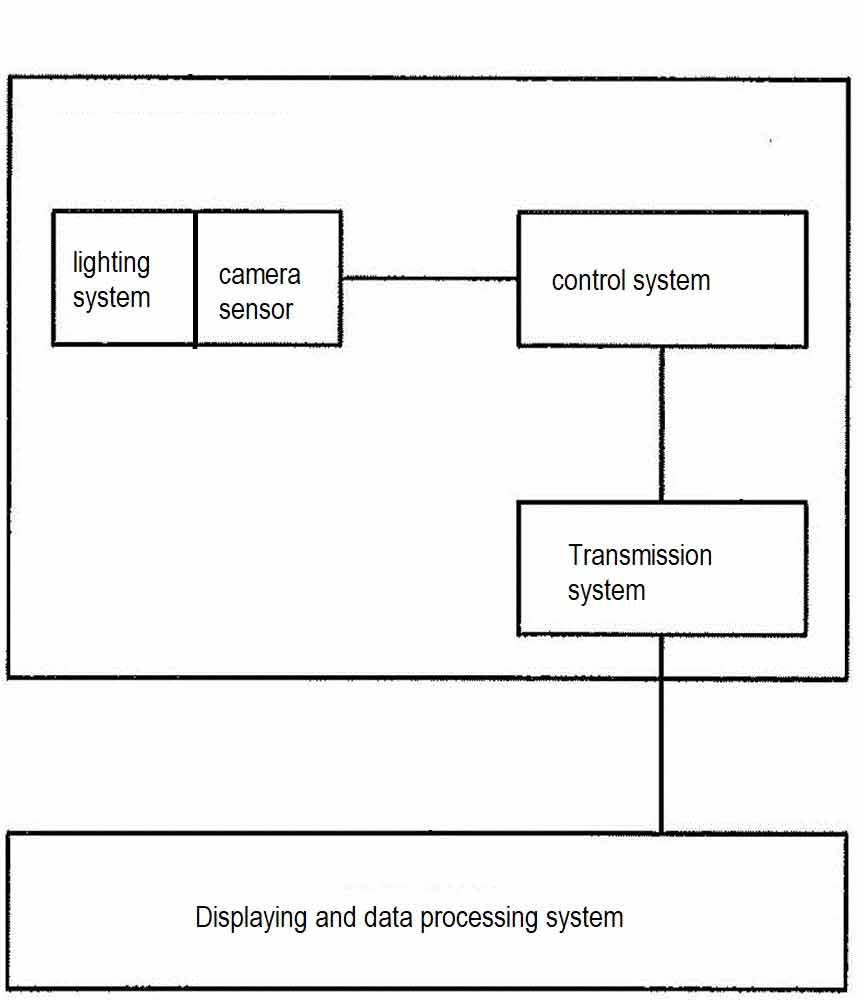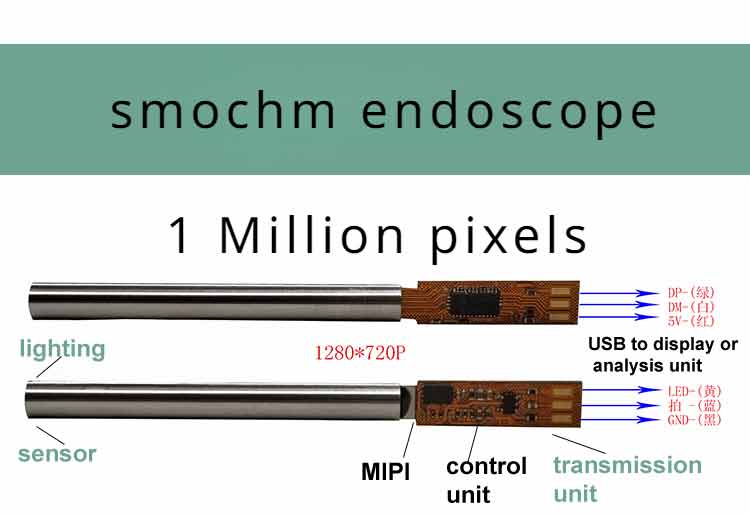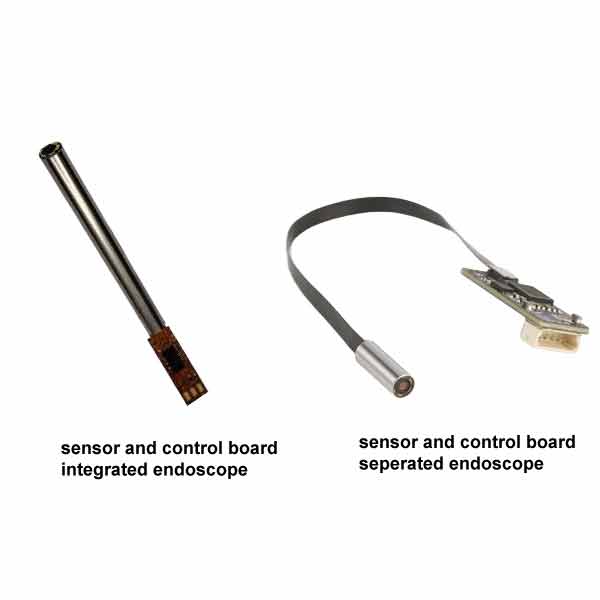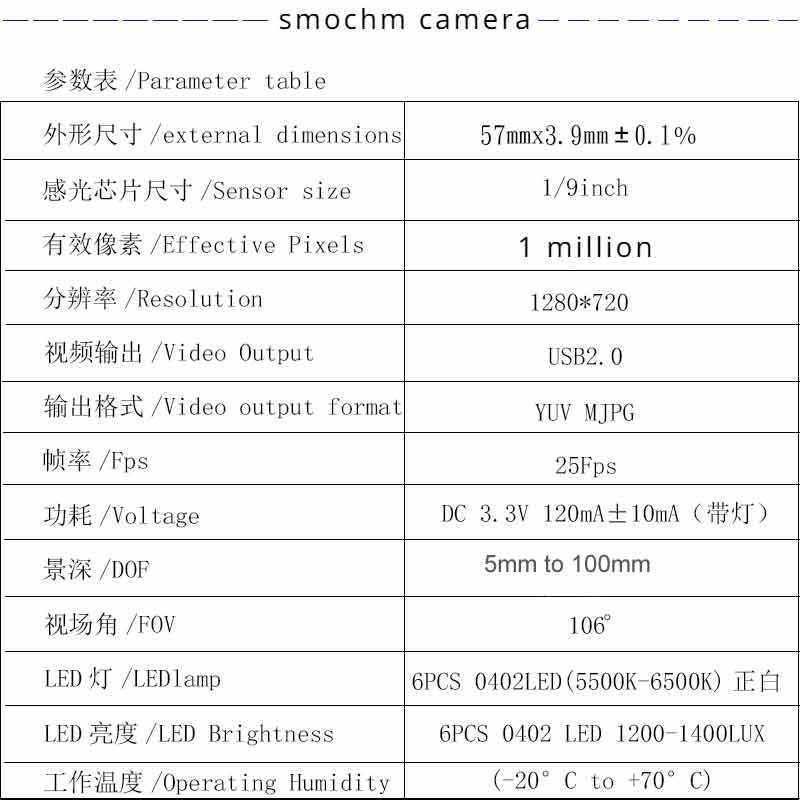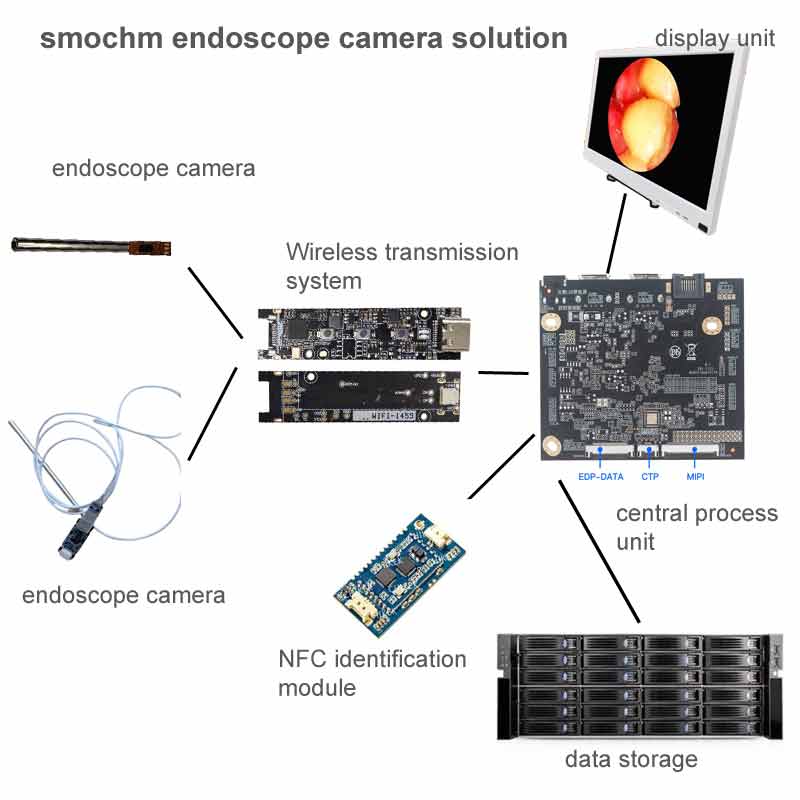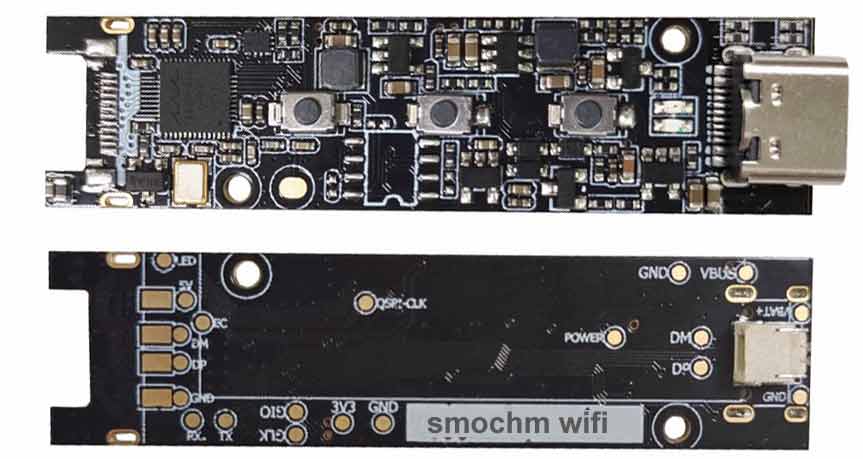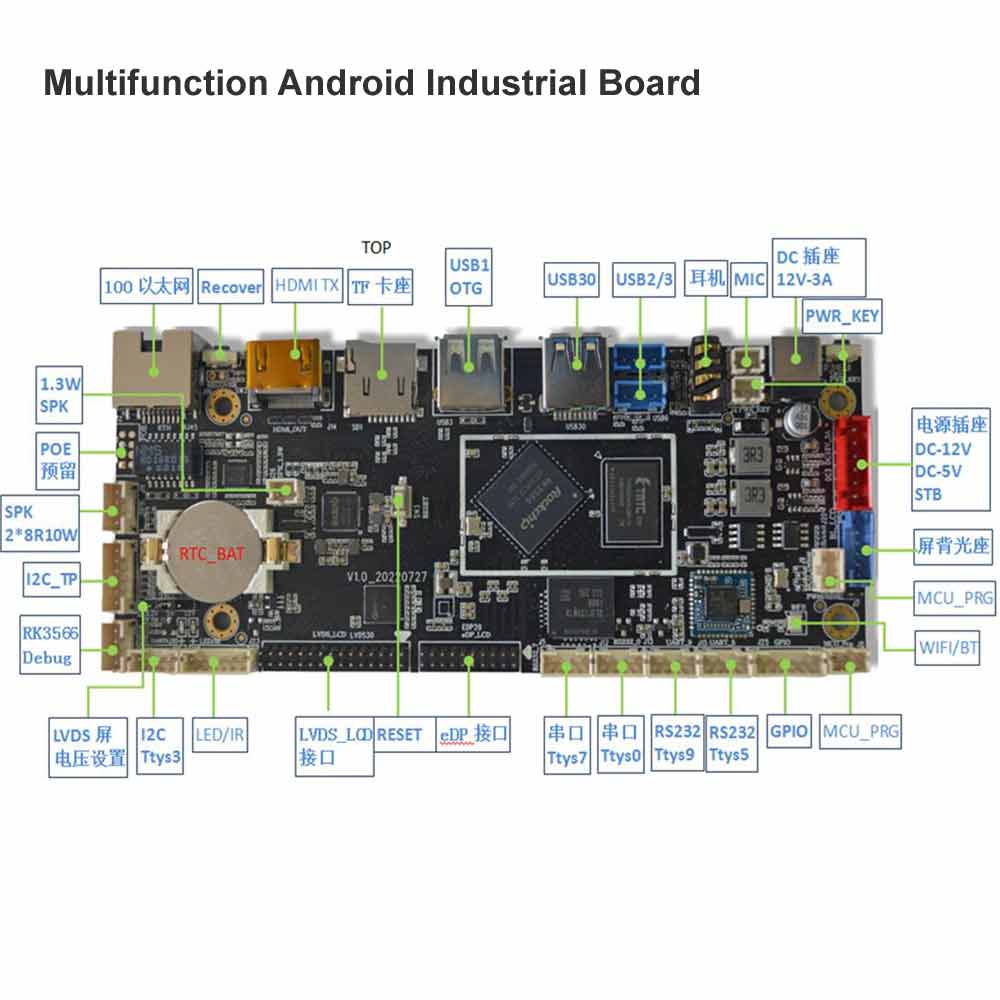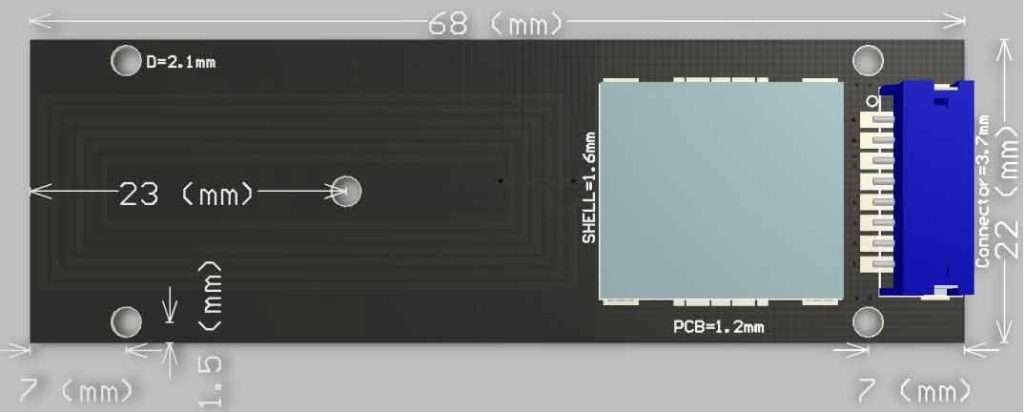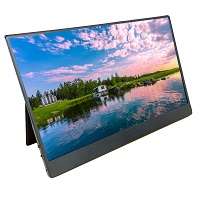In the field of medicine, endoscope camera technology is a revolutionary innovation that allows doctors to observe and treat the human body’s interior without open surgery. The principles and applications of endoscope camera obey multiple disciplines, from basic physical optics to advanced digital imaging technology, and its development has greatly propelled the advancement of minimally invasive surgery. In this article will discuss in detail the working principles of smochm endoscope camera solution, their design features, and their applications in multiple areas such as medicine, industries.
1.Basic structure of Endoscope camera
The core principle of endoscope is to utilize the transmission and reflection characteristics of light, through a series of optical components, to convey images of the human body’s interior to the outside for medical observation and other purpose. This process involves several key steps:
1.1 lighting system for camera:
An endoscope contains an internal light source, usually LEDs or halogen lamps transmitted via fiber optics, which provide necessary illumination to light up dark areas inside the body, making internal tissues visible.
1.2 Imaging sensor system:
The top of the endoscope is equipped with a set of lens systems that can focus and magnify the image of internal tissues. Depending on the design and requirements, an endoscope can be fitted with a single lens, double lenses, or a complex zoom system. there is a digital camera sensor behind the lens to remap the real world to digital world.
1.3 lighting and sensor control system
In order to control the lighting system and the imaging sensor system, there is a control board behind the lighting system and the image sensors, normally the camera sensor connect to the control system board with the MIPI CSI interface, the control system can adjust the lighting strength and the camera sensors parameters, or process the datas from the camera sensors, and then conveying to next stage.
1.4 Transmission unit of video and image :
After imaging, the image and video datas are transfer to control system board , at this stage , we will transfer the data with a common interface- USB interface, the USB interface is a popular driver free interface for many devices, such as computer, mobile phone, with the USB interface, the captured video and image are easy to hand over to the powerful display device and data analysis device, for more convenient to the other end of the endoscope. During this process, the optical signal may be enhanced or processed to improve image quality.
smochm also provide wireless transmission solution additional to the USB connection, with smochm wifi transmission board, the USB input data can be sent out with wifi signal , then the communication between the endoscope modue and display system or analysis unit can be seperated.
1.5 endoscope camera central processing unit:
Finally, the optical signal is converted into an electrical signal and captured by a camera or other sensors, transmitted to a display screen, allowing doctors to observe the internal conditions in real-time through a monitor.
2.Design Features of smochm Endoscope camera solution
To meet various applications, endoscopes are designed with multiple features, normally there are two types of endoscope in smochm solution: integrated endoscope camera and seperated endoscope camera.
integrated endoscope camera: the camera sensors ,lighting unit , control unit and transmission unit are integrated into 1 motherboard. the features: smaller size, but higher temperature.
seperated endoscope camera: the camera sensor and lighting unit are seperated with other units. the features: can get lower temperature ,but has bigger size.
2.1 Combination of Flexibility and Rigidity:
Endoscopes often have soft and bendable probes and sturdy outer tubes, allowing them to easily navigate through the body’s winding passages while maintaining stable image quality.2.2 Multifunctional Channels:
Many endoscopes are designed with working channels that allow doctors to perform biopsies, tissue removal, or other therapeutic procedures through the scope.2.3 High-Definition Imaging:
With technological advancements, the imaging capability of endoscopes continues to improve, with some high-end models even capable of providing three-dimensional images, significantly enhancing diagnostic accuracy. normally in medicine area, the medical endoscope needs a small size, the sensor pixels is from 0.08M to 1M pixels, the 2M and above pixels sensor are used in industrial purpose for its size bigger.2.4 small and precise design
the smochm endoscope solution can provide small size to meet requirements from our clients, we can provide small size camera lens from 1.2mm to 9mm size to meet different applications.3.important parameters of Endoscope camera
What are the important parameters for an endoscope camera? for medical small size endoscopes, there are some key parameters that need to be paid attention to:Light intensity.
The light intensity is crucial for the image quality of endoscopes, as the working environment of medical endoscopes often lacks sufficient light and requires the lens itself to have a certain level of light intensity. but at the another size, the lighting brightness can’t be too strong, because the body can’t resist a high temperature, for example , the nose endoscope and otoscope can’t have too strong lighting, the high temperature may hurt the tissues and make the patients unconfortable. it is very important t balance the temperature and the light intensity. smochm medical endoscope solution will control the temperature lower 40 celsius degree. it is similar to the body temperature. There are 4 LED lights to 10 LED lights in the lens depending on the endoscope purpose.
Focal length.
Focal length can affect the range of lens observation. If it is too far away, it will not be able to see the area clearly, and if it is too close, it will not be able to see the entire area. smochm medical endoscope camera solution normally controls the focal length from 5mm to 100mm, but please bear in mind that the shorter of the focal length, the more difficult it will be, and the cost will be higher.
Resolution.
Resolution can affect the clarity of an image, usually expressed in lines/millimeters or pixels/millimeters. The clarity of the endoscope lens is crucial as it affects the final examination results and the doctor’s judgment. as the small size requirement, we can’t put in big sensors intu the lens, the smaller the size is, the more expensive it is, normally 1M pixels camera is enough for medical endoscope, for 1.2mm or 1.5mm endoscope, the size is very small, we have to use the 0.16M pixels camera sensor.
Field of view angle.
Field of view angle, which refers to the range of field of view that the lens can cover, is generally expressed in terms of angle and is one of the important parameters of the lens, the bigger of the view angle, the more expensive it is.
4.smochm endoscope camera solution
the smochm endoscope camera solution has a creative structuer from the components to total solution.
Smochm Endoscope Camera Unit: This is the part of the smochm endoscope that contains the camera. It captures the images or videos from inside the body cavity where the endoscope is inserted. The camera might have features like high definition, wide-angle lens, or built-in LED illumination for clear and bright images even in low light conditions. we have different type pixels camera sensors: 0.08M, 0.16M, 0.3M, 1M . the clients can choose different configurations based on their system purpose and requirement.
the seperated endoscope camera here
the integrated endoscope camera here
Smochm Wireless Transmission Unit: This unit is responsible for transmitting the data captured by the camera unit wirelessly to the other components of the system. Its function is crucial for real-time viewing and recording without the need for cables, which can improve maneuverability and reduce the risk of infection. we have different types transmission board,they can be used in different transmission rate:0.3M pixels , 1M pixels and above
wifi board supported 0.3M endoscope camera
wifi board support 1M and 2M endoscope camera
Smochm Central Processing Unit (CPU): The CPU is the brain of the endoscope system. It processes the image data received from the camera, applies any necessary image enhancements, and manages the operation of the entire endoscope system. It may also handle functions such as displaying , data storage, AI analysis, or integration with other systems like a surgical robot. this board is based on Android 11, lots of interfaces available on board: I2C, UART, EPD,LVDS…
link to the central processing unit board
NFC Identification Unit: Near Field Communication (NFC) identification unit is used for identifying and pairing patients within the endoscope system. It allows secure and seamless communication between components, ensuring that only authorized devices can connect to the system. This feature enhances patient safety and data security. smochm NFC module based on NXP chipset, it has the I2C interface to communicate with the central processing unit motherboard.
for example, each patient has a unique NFC identification label, the NFC identificcation unit automatically detect the label, and create a folder named with this unique NFC lable on the central processing unit ,then all the images and videos will be stored in this folder.
Display Unit: The display unit is where the images or videos captured by the endoscope camera are viewed. It could be a high-resolution monitor with features like touchscreen capabilities for controlling the endoscope settings or marking points of interest on the images.smochm solution supports from small size screen such as 3.5 inches display to 60 inches display
Storage Unit: The storage unit is responsible for saving the data captured by the endoscope system. This includes images, videos, and possibly patient information. the storage unit can work with other units to build up a total smart endoscope system, each patient has its own storage , the storage unit can be a local storage system or a network storage system. it depends on our clients requirement.
Each of these units plays a critical role in the functionality of smochm endoscope camera system, enabling minimally invasive diagnostics and procedures with improved efficiency and accuracy.
5.the wide applications of smochm endoscope camera
smochm endoscope camera solution have a wide range of applications, covering almost all subfields of medicine:
smochm endoscope in Medical application:
Gastrointestinal Endoscopy: Used to examine the esophagus, stomach, and intestines to detect ulcers, polyps, and other abnormalities.
Laparoscopic Surgery: In abdominal surgeries, endoscopes can reduce the size of incisions and shorten recovery time.
Arthroscopy: Used to inspect and treat joint issues, such as knee injuries.
Urological Endoscopy: Used to examine diseases of the urinary system, such as the bladder and urethra.
Gynecological Endoscopy: Used for the diagnosis and treatment of gynecological diseases.
Smochm endoscope solution in industrial application:
smochm endoscope solution is not only widely used in the medical field, but its application in industry is equally important. Here are some specific application areas:
Aerospace field:
The maintenance and inspection of airplane engines are crucial. Due to the complex structure of the engine, it is difficult to troubleshoot through disassembly for routine checks. Industrial endoscopes play a role here, as they can inspect cracks in turbine blades and combustion chambers, foreign objects inside the body structure, and surface defects in oil pipeline welds. In the space sector, endoscopes are used for quality control during the research, development, manufacturing, and assembly of rocket engines, as well as for defect investigation in critical parts such as flight navigation systems.
Rail transportation field:
With the development of high-speed railways, endoscopes are also used for inspections of foreign high-speed railways and domestic CRH models.
Metal workpieces and non-metallic products:
Endoscopes can be used to detect defects such as burrs, scale, and residues inside metal workpieces, and defects like black spots on the inner surface of ceramic blanks, uneven glaze layers, and bubbles in non-metallic products.
Special equipment:
For the inspection of special equipment such as pipelines, endoscopes can check for new defects in abnormal parts of pipeline structures and geometric sizes. In summary, the application of endoscopes in industry is very extensive, covering multiple fields from aerospace to automobile manufacturing, electricity, petrochemicals, etc., meeting the exploration needs of hidden parts within equipment, ensuring the safe operation of equipment and the control of product quality.

